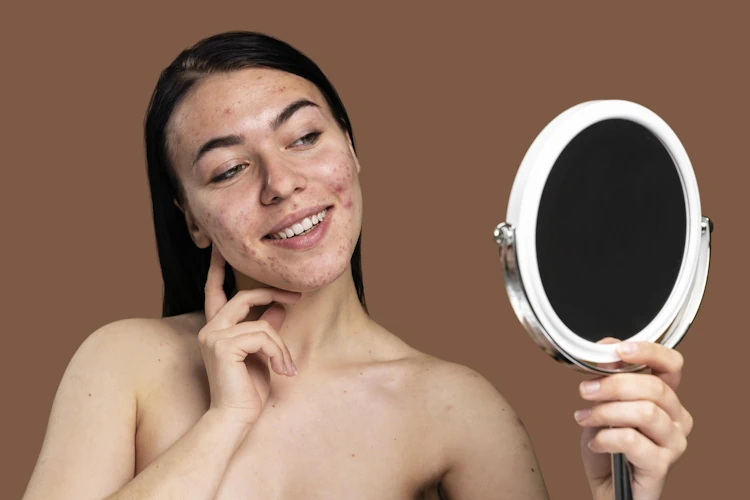Acne is a common skin condition that affects people of all ages, causing distress and affecting self-esteem. While there are various treatment options available, including topical creams, oral medications, and lifestyle modifications, some individuals may find relief through laser therapy. Laser treatments for acne utilize focused beams of light to target and reduce the underlying causes of acne, such as bacteria, inflammation, and excess oil production. In this article, we’ll explore the different types of lasers used in acne treatment or cara hilangkan jerawat pasir di dahi and help you determine which one may be right for you.
Understanding Acne Laser Treatments
Before discussing the types of lasers used in acne treatment which its called cara menghilangkan jerawat, it’s essential to understand how laser therapy works. Acne laser treatments work by delivering controlled beams of light energy to the skin, targeting specific areas affected by acne. These treatments can vary in intensity and wavelength, depending on the severity of the acne and the desired outcome. Laser therapy can effectively reduce acne lesions, improve skin texture, and minimize the risk of scarring.
Types of Lasers Used in Acne Treatment
- Ablative Lasers:
- Ablative lasers work by removing the top layer of skin, stimulating collagen production, and promoting skin rejuvenation. These lasers are effective for treating moderate to severe acne, including acne scars. Examples of ablative lasers used in acne treatment include carbon dioxide (CO2) lasers and erbium lasers.
- Non-Ablative Lasers:
- Non-ablative lasers work by targeting the underlying causes of acne, such as bacteria and inflammation, without damaging the skin’s surface. These lasers are less invasive than ablative lasers and have minimal downtime. Non-ablative lasers, such as pulsed dye lasers (PDL) and diode lasers, are suitable for treating mild to moderate acne and improving overall skin texture.
- Fractional Lasers:
- Fractional lasers deliver microscopic laser beams to targeted areas of the skin, creating small, controlled wounds to stimulate collagen production and skin renewal. These lasers are effective for treating acne scars, hyperpigmentation, and uneven skin tone. Fractional lasers, such as fractional CO2 lasers and fractional erbium lasers, offer customizable treatment options and minimal downtime.
- Pulsed Light Therapy:
- Pulsed light therapy, also known as intense pulsed light (IPL) therapy, uses broad-spectrum light to target and destroy acne-causing bacteria, reduce inflammation, and shrink oil glands. This non-invasive treatment is suitable for mild to moderate acne and can also improve skin tone and texture.

Choosing the Right Laser for You
When considering laser therapy for acne treatment, it’s essential to consult with a qualified dermatologist or skincare specialist who can assess your skin condition and recommend the most suitable treatment option. Factors to consider when choosing the right laser for you include:
- Acne Severity: The severity of your acne will determine the type of laser treatment recommended. Individuals with moderate to severe acne or acne scars may benefit from ablative or fractional lasers, while those with mild acne may opt for non-ablative lasers or pulsed light therapy.
- Skin Type: Your skin type and tone will influence the choice of laser treatment and the risk of side effects such as hyperpigmentation or hypopigmentation. Individuals with darker skin tones may require specialized lasers or lower treatment intensities to minimize the risk of adverse effects.
- Treatment Goals: Your treatment goals, such as reducing acne lesions, improving skin texture, or minimizing acne scars, will guide the selection of the appropriate laser therapy. Your dermatologist will work with you to develop a personalized treatment plan tailored to your specific needs and desired outcomes.
FAQs
- Are laser treatments for acne painful?
- Laser treatments for acne are generally well-tolerated, with minimal discomfort during the procedure. Your dermatologist may apply a topical numbing cream or cooling gel to minimize any sensations of heat or tingling.
- How many sessions of laser treatment are typically needed to see results?
- The number of laser treatment sessions required depends on factors such as the severity of your acne, the type of laser used, and your treatment goals. Most individuals require multiple sessions spaced several weeks apart to achieve optimal results.
- Are there any side effects associated with laser treatments for acne?
- While laser treatments for acne are generally safe, some individuals may experience temporary side effects such as redness, swelling, or mild discomfort following the procedure. These side effects typically resolve within a few days and can be managed with proper post-treatment care.
- Can laser treatments for acne be combined with other skincare treatments?
- Yes, laser treatments for acne can be combined with other skincare treatments such as topical medications, chemical peels, or microdermabrasion to enhance results and address specific skin concerns. Your dermatologist will customize a treatment plan tailored to your individual needs.
- How long do the results of laser treatments for acne last?
- The longevity of results from laser treatments for acne varies depending on factors such as skin type, acne severity, and maintenance treatments. While some individuals may experience long-lasting improvements, others may require periodic touch-up sessions to maintain clear, healthy skin.